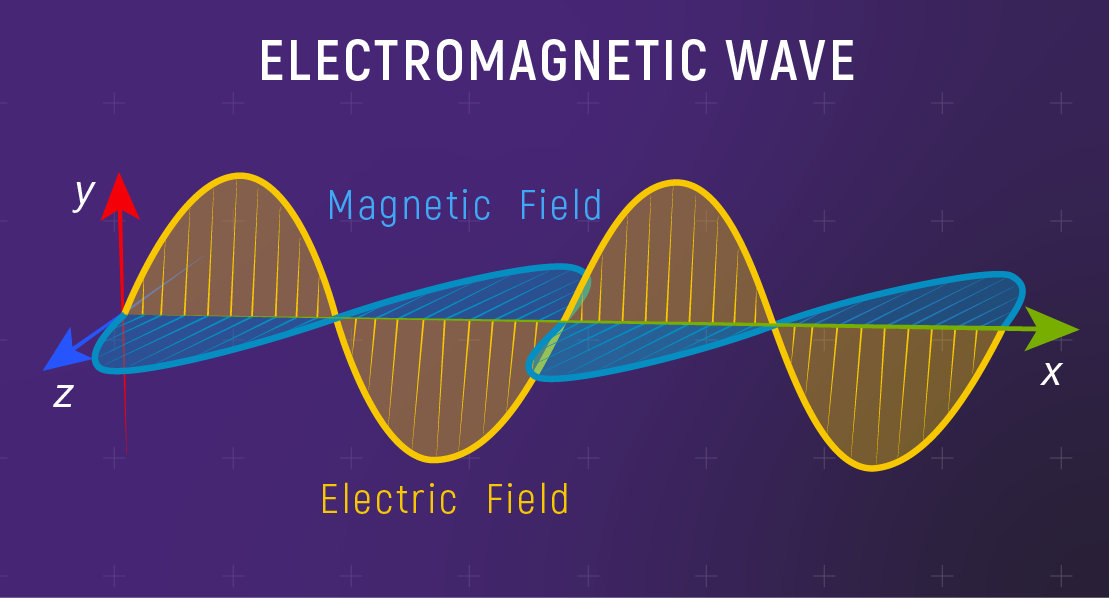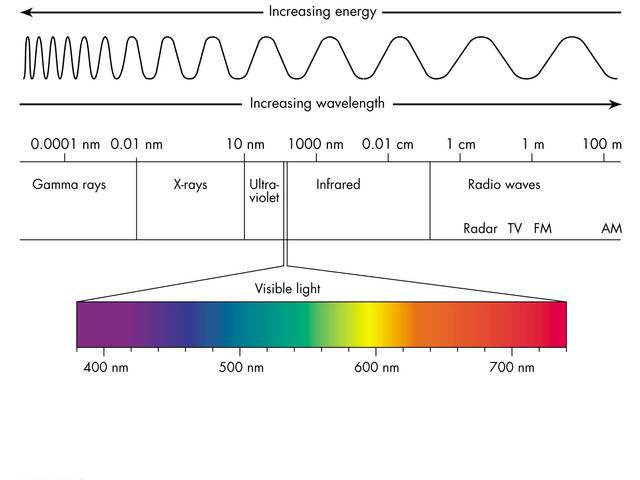Electromagnetic Waves Study Guide
INTRODUCTION
Have you seen electric wires spiraled through a non-magnetic rod? As you switch on electricity, the rod behaves like a magnet. You can see the application of electromagnetic waves in electric water heaters, microwaves, etc. All these instruments are used by us everyday. So, let us know more about electromagnetic waves and their different formation.
DEFINITION
- Electromagnetic waves can be defined as waves that are multiplied by simultaneous periodic variations of magnetic and electric field intensity.
- The magnetic field and the electric field are at right angles to each other.
- The electromagnetic waves can be easily shown in a graph.
- The graphical representation of electromagnetic waves is as follows:
The waves are shown in a sinusoidal graph, and the graph contains an electric and magnetic field that are at right angles to each other. By seeing the graph, it can also be said that electromagnetic waves are components of oscillating electric and magnetic fields.
FORMATION OF ELECTROMAGNETIC WAVES
-
You will observe that in an electric field, the positive charges accelerate in the direction of the field.
-
On the other hand, the negative charges go to the other side of the field.
-
It occurs due to the external force being exerted on the electric field.
-
Whereas in a magnetic field, it is formed due to the moving charged particles.
-
Here, a force is exerted on the moving particles, and the charges are always perpendicular to the direction of the velocity.
-
Hence, this helps to change the direction of the velocity of the moving particles but does not change the speed of the particles.
-
Therefore, electromagnetic waves are produced by accelerated particles.
-
They are nothing but particles moving in free space.
-
The speed of electromagnetic waves in free space is c. i,e. speed of light.
-
If the oscillation of the charged particles is f and it produces an electromagnetic field wave with a frequency f, then,
λ = c/f
ELECTROMAGNETIC SPECTRUM
Electromagnetic waves are classified according to their frequency for according to their wavelength
λ = c/f
The wavelength ranges of different lights are as follows,
For visible light – approx. 400 nm to approx. 700 nm
For violet light – approx. 400 nm
For red light – approx. 700 nm
SUMMARY
- The invention of electromagnetic waves has proven to be a very useful recent invention.
- It occurs due to the presence of an electric field and magnetic field.
- The formula for the electromagnetic wave is λ = c/f.
FAQs
Q. What are electromagnetic waves?
Electromagnetic waves are produced when an electric field comes in contact with a magnetic field. The electric field and the magnetic field are at right angles to each other.
Q. How are electromagnetic waves formed?
When the electric field and the magnetic field come in contact with each other, the accelerated particles produce electromagnetic waves.
Q. Name the property of an electromagnetic wave that is dependent on the medium in which it is traveling. What is the sequence for the propagation of electromagnetic waves?
Velocity is the property of an electromagnetic wave that is dependent on the medium in which it is traveling.
There are three types of electromagnetic wave propagation: Ground wave propagation, skywave propagation, and space wave propagation. The propagation of electromagnetic waves depends upon the frequency range.
Q. What is the wavelength of the photon of infrared light with the frequency of 2.5 x 1014 Hz?
c = 3 x 108 m/sec
f = 2.5 x 1014 Hz = 2.5 x 1014 s-1
λ = c/f = 3 x 108 / 2.5 x 1014
= 1.2 x 10-6 m
The wavelength of the photon of the infrared light is 1.2 x 10-6 m.
We hope you enjoyed studying this lesson and learned something cool about Electromagnetic waves! Join our Discord community to get any questions you may have answered and to engage with other students just like you! We promise, it makes studying much more fun!😎
SOURCES
- Production of Electromagnetic Waves: https://courses.lumenlearning.com/physics/chapter/24-2-production-of-electromagnetic-waves/ Accessed 14th April 2022.
- What are Electromagnetic Waves? https://earthsky.org/space/what-is-the-electromagnetic-spectrum/ Accessed 14th April 2022.


